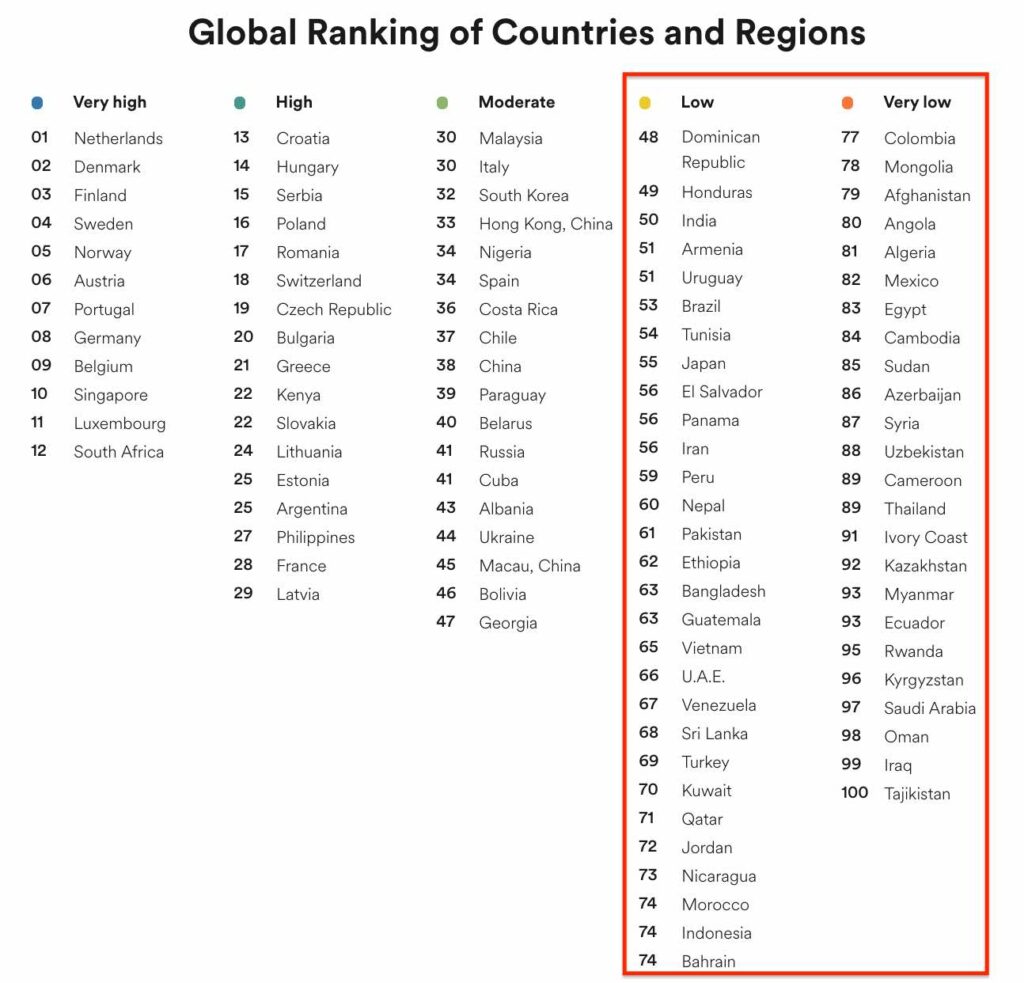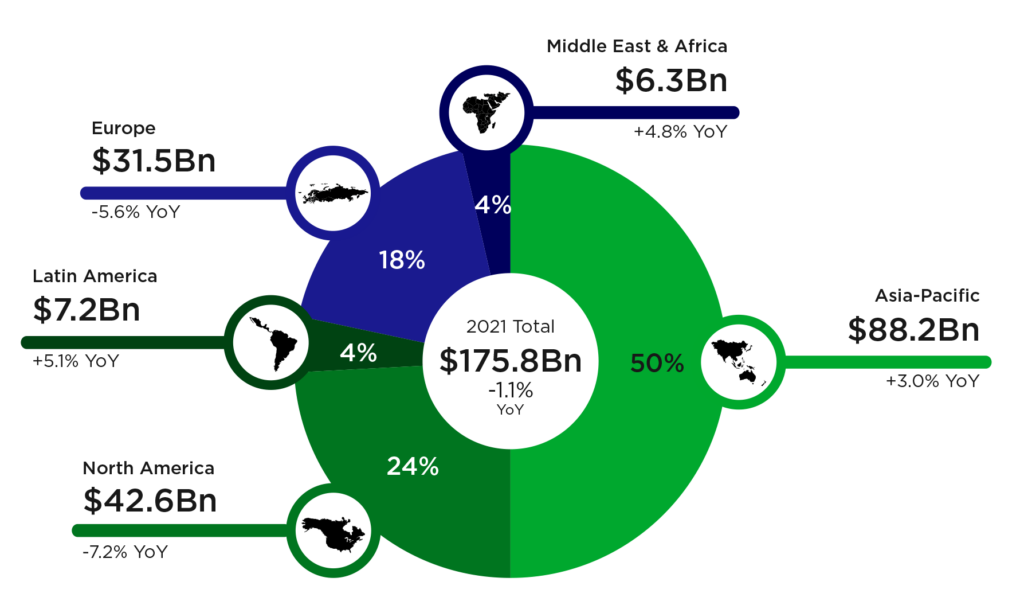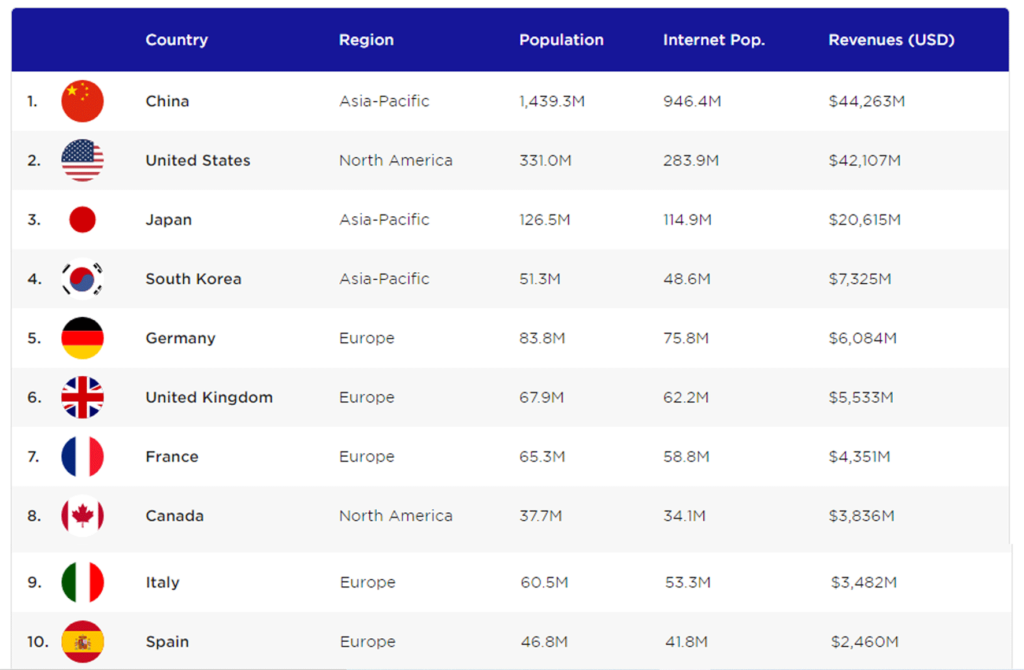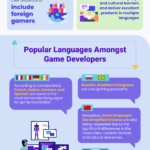As a game developer, you have decided that you want to have a successful game, reach more players, and make more sales. But what markets should you focus on? And in what languages should you localize it? Should you choose a European language? Or an Asian one? What languages should you start with? And in what order? It can also be difficult to decide whether to localize the entire game or just part of it.
All these things are not simple and can be summarized in two questions:
- How much does localization cost?
- Will it be successful/attractive for the speakers of X language and have good sales for the market?
Many factors come into play when choosing languages for translating a game. That’s why, in this post, we’ll talk about the must-have languages that will allow you to adapt a game to the most profitable markets.
However, before discussing more on this topic, let’s clarify a few things that will impact your costs and therefore your decision:
- you can opt just for the basic localization. In addition to translating in-game texts, this includes translating the description, keywords, and screenshots (if you choose to publish and sell your game online through Google Play, the Apple Store, Steam, or another platform for gamers.
- if you choose to go further, you can choose to implement a partial localization (in-game text & subs) or a full localization (including audio files).
- regardless of how you publish your game – online or offline, on your own website, or on different platforms for players – the translation of marketing and advertising materials is mandatory.
4 Questions To Answer Before Selecting The Languages For Your Game Localization
Before choosing languages to translate and localize the game, consider answering a few questions:
- what are your game genre and monetization model? Is it a freemium or a paid one, based on in-app purchases?
- if you intend to use players’ platforms to publish your game, what are they? And what are the most popular languages on those platforms?
- how fierce is the competition in the intended market and who are your main competitors? Did they fully translate their games, or did they choose a partial localization?
- what is the English proficiency of your target market? Do they use the Latin alphabet or do their languages have nothing in common with it?
You need the information resulting from these answers to understand whish potential has your game on the market you want to target and how it matches with the local preferences. An important factor is also what expectations potential customers from certain countries have. For example, in Poland, it’s pretty common to only have text localization and English voice-overs while in France, Italy, Germany, and Spain, gamers expect full VO, especially on big titles.
The answers to these questions will help you understand what chances your game has on the target market and if it matches the local preferences. Also, the expectations of potential customers in certain countries are another important factor. For example, in Poland, it’s quite common to have only text localization and voices in English, while in France, Italy, Germany, and Spain, players expect full VO, especially for big titles.
Also, you should know that there are non-speaking English countries where the natives have a high proficiency in English. Therefore, players don’t mind playing games in English at all. Especially if the amount of text is minimal or the concept of the game is a familiar one.
You can also check the language specifications in T-Index or the EF English Proficiency Index. It can be useful to know which countries have low and very low English proficiency skills, as they probably won’t accept the unlocalized games at all.

Which languages are worth translating your game into?
According to the Newzoo report, in 2020 there were 2.7 billion gamers globally, generating a total turnover of $159.3 billion. In 2021, the number of players is expected to increase by 5.3% over the previous year, reaching 3.0 billion players, while the estimated global revenue will be $ 175.8 billion by the end of the year.

In 2020, the top 10 countries producing the max game revenue included China, the USA, Japan, South Korea, Germany, UK, France, Canada, Italy, and Spain. These 10 countries generated almost $138.3 billion, meaning almost 87% of the global revenue.

These markets were followed by Russia, Mexico, Brazil, Australia, Taiwan, India, Indonesia, Turkey, Thailand, and the Netherlands. All added another $ 11.5 billion, which means 8% of the gaming industry’s global revenue.
Therefore, by localizing into all these countries, you’ll get access to the markets with nearly 90% of the world’s game revenue.
Top 10 Best Game Localization Languages
Even if at SandVox, we translate and localize games in 30 languages, our must-have list includes EFIGS+CJK+ PTBR+RU.
English
The English-language location provides access not only to the United States and other English-speaking countries but also to much of the rest of the Western world. Even if players might prefer a local language version, if the game is good, they will also play it in English. Given the specifics of each of them, you can consider the separate localization for British, American, and Australian English.
French
Like English, translation, and localization in French open the door to several French-speaking countries. In addition to France, this market includes Belgium, Switzerland, Monaco, and several African countries. Metropolitan French (or European standard) also works for Canada (about 20% of the Canadian population speaks French), although Canadians might prefer the local version.
Italian
Italy is the 9th largest gaming market in the world, with Italian being officially spoken in Italy, Switzerland, and San Marino. Due to the low level of English proficiency, in these countries, consumers are used to high-quality gaming localizations.
German
If you localize in German, you will reach German and Austrian players, as well as those from Switzerland, Luxembourg, and Lichtenstein. Linguistically, German is closer to English than any of the other FIGS languages (French, Italian or Spanish), and German players tend to speak English better than other non-English speaking nations. It’s up to you whether you decide to have a localized German version or not.
Spanish
Among the FIGS languages, Spanish is a special case. Even though the localization in Spanish was originally intended only for Spain, nowadays you should consider the growing Latin American market, with a population of hundreds of millions.
This makes Spanish the second or third most spoken language in the world depending on methodology. Although the value of the Latin American market remains very small compared to that of Europe, we see here a faster growth than in any other region.
Simplified Chinese
Simplified Chinese is the most widely spoken language in the world, and China is not only poised to surpass the US as the largest gaming market this year but is also expected to grow at an astonishing rate in the upcoming years. In 2014, the country lifted the 14-year ban on consoles and has an unparalleled appetite for the internet, mobile phones, and electronic entertainment. However, China remains one of the most difficult markets to enter due to cultural differences, local laws and regulations, and a strong local industry that knows exactly what Chinese gamers want. All of this makes Mainland China a risky business with high investments, but with a possible high return for localization.
Japanese
Along with the USA, Japan was the birthplace of the modern gaming industry, the origin of giants such as Nintendo, SEGA, and Sony, and beloved brands like Pacman, Sonic, and Mario. Therefore, the Japanese must hold a special place in all game enthusiasts’ hearts. It is now in third place worldwide after the USA and China and is well-known for dedicated lifelong gaming fans who don’t hesitate to spend a lot of money on games they love. When it comes to foreign products, it remains part of the “mysterious Orient”, despite abundant exchange between Japanese and Western games. The blueprint of what makes a successful localization from the West to Japan or vice-versa has not been found yet and many of the world’s biggest companies have failed when trying to enter this market.
Korean
Korean is also one of the most important 3 languages for Asian localization. Despite a relatively small population of under 50 million, South Korea has a gaming culture like Japan. The Korean gaming industry is extremely competitive, and to be successful, a Western title usually requires deep and correct adaptation, a thought-out strategy, and ideally a local partner. The country is well known as a major hub for eSports with live events attracting millions of viewers.
Brazilian Portuguese
With 81.2 million players, Brazil’s digital game market reached $1.6 billion in 2020. While the whole region of Latin America is still very small compared to all others, it is also the fastest-growing. This puts Brazilian Portuguese in the same basket as Latin American Spanish as two major emerging languages for the gaming industry. However, while Spanish used in Spain and Latin American countries are not that different, the Portuguese used in Brazil requires a dedicated localized version.
Russian
Russia is a different niche compared with the established European and Asian markets. In terms of global gaming revenue, Russia ranks #12, but has the highest percentage of PC gamers globally, with over 90% playing games on the PC. The mobile gaming market in Russia is relatively new, giving developers a high probability of success. Anyone entering the Russian market will face fierce competition from well-established local companies, some of which are virtually unknown outside the country. As the Russian economy tends to be volatile, and because of high retail prices and poor copyright enforcement, piracy can cause serious problems.
Final Words
In short, the main European languages are a safe bet, regardless of the original version of the game. English, French, German, Spanish, Portuguese, and Italian are the traditional languages to start with. In Asia, China, Japan, and Korea are massive markets with very high potential. But if you want to be successful here, the quality of the location must be very good. Latin America and Russia are growing fast, but the market size and average revenue per user are much smaller.
No matter what decisions you make, when choosing the languages for localizing your games, you need to consider not only the cost of translation but also all the collateral expenses that can come up.






